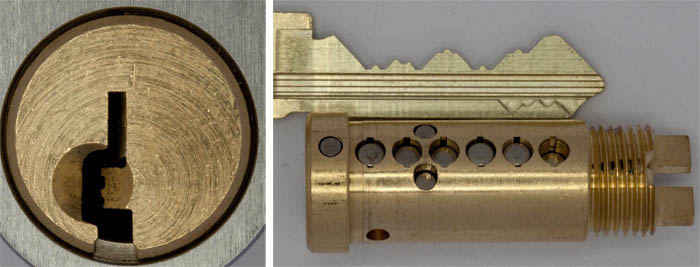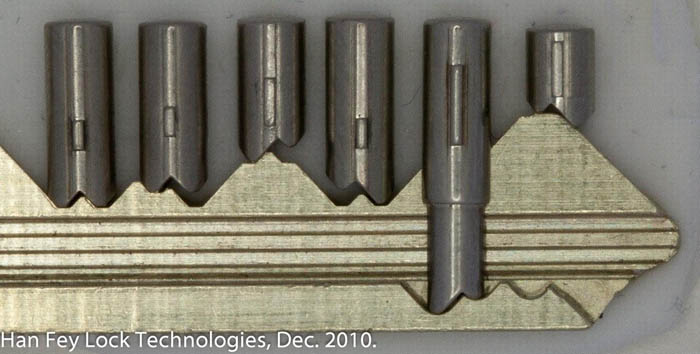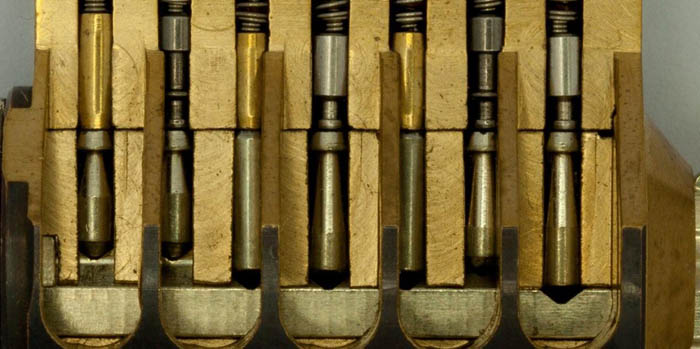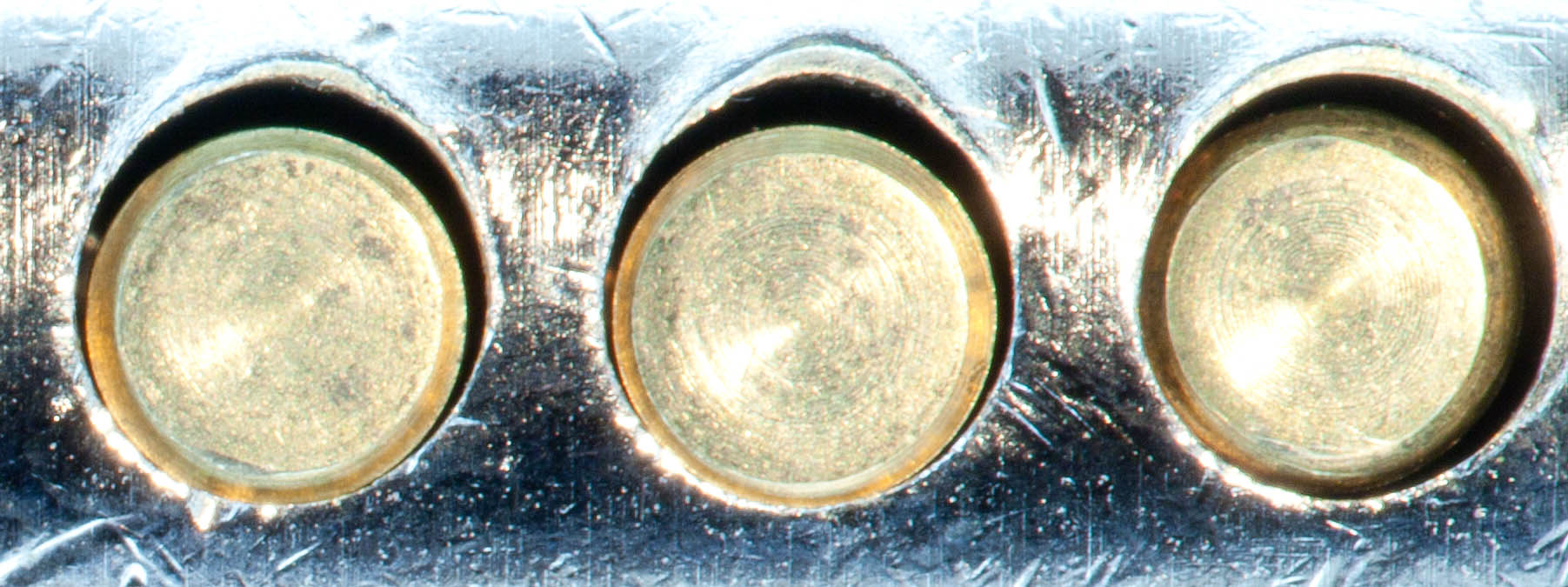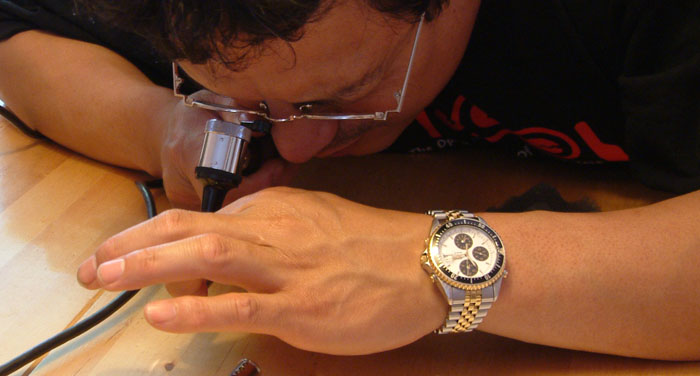2011 will bring some interesting papers on advanced locks. Both Michael Huebler and Han Fey are working on articles on some unique locks. Han’s article will be about the latest lock from Assa, the d12.
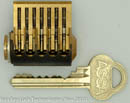 In my previous posting I asked what two locks had in common. I will now give you the answer. The bottom lock is the famous ‘seven pin’ ASSA 700 lock, and contains some extremely nasty anti-pick pins. In short: if you tension the lock and lift a few pins, the lock will ‘freeze’. Once a pin is locked between the core and the house you can only move it again after (almost?) fully releasing tension. We learned this seven pin lock was developed and produced already over a period of 50 years (!), and is still a very common ‘medium security’ lock in Sweden.
In my previous posting I asked what two locks had in common. I will now give you the answer. The bottom lock is the famous ‘seven pin’ ASSA 700 lock, and contains some extremely nasty anti-pick pins. In short: if you tension the lock and lift a few pins, the lock will ‘freeze’. Once a pin is locked between the core and the house you can only move it again after (almost?) fully releasing tension. We learned this seven pin lock was developed and produced already over a period of 50 years (!), and is still a very common ‘medium security’ lock in Sweden.
And they call it medium security. Sure, if you compare the seven pin version to locks like the Assa Twin system (pdf) (like Twin Combi and DP) there is still a huge difference between them. But I dare to call the design of the 700 high security anyway.
The top image from my previous posting shows the new ‘medium security lock’ by Assa. It is a new design to replace the Assa 700 lock and it is called the d12. So that is what they have in common.
 Han’s preview of the d12 article already covers twenty pages(!). Here is some basic info about this amazing new lock. The pin has two tips, and there can be an offset between the left and right contact points. This gives very interesting properties for masterkey-systems. To prevent the pins from twisting, they are equipped with little wings that fall into a slot in the channel of the core. And the wings also make some of the pins ‘float’, so a ‘999’ key will not make contact with all pins. If you look at the image, you can see the fifth pin is much longer and is being operated by a lower portion of the key. And if you manage to get your picktool inserted, the lock has the same anti-pick properties as the 700 series. You will have to be patient for Han’s article to read all the ins- and outs of this system, but I can just say it is neat to see groundbreaking new technology like this enter the market.
Han’s preview of the d12 article already covers twenty pages(!). Here is some basic info about this amazing new lock. The pin has two tips, and there can be an offset between the left and right contact points. This gives very interesting properties for masterkey-systems. To prevent the pins from twisting, they are equipped with little wings that fall into a slot in the channel of the core. And the wings also make some of the pins ‘float’, so a ‘999’ key will not make contact with all pins. If you look at the image, you can see the fifth pin is much longer and is being operated by a lower portion of the key. And if you manage to get your picktool inserted, the lock has the same anti-pick properties as the 700 series. You will have to be patient for Han’s article to read all the ins- and outs of this system, but I can just say it is neat to see groundbreaking new technology like this enter the market.
And last but not least: there was a small error in Han’s image in my previous post. Pin six was not positioned correct (as Michael Huebler pointed out in the comments). Below is the correct image.
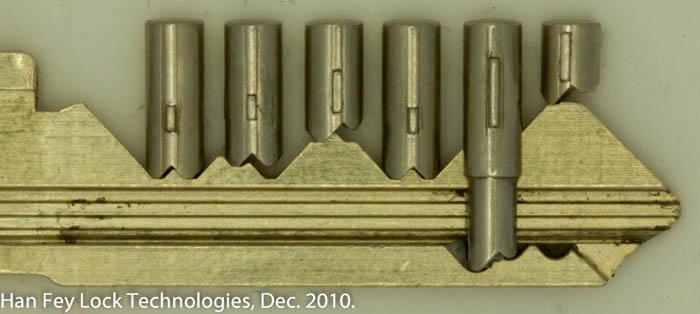
To be continued (somewhere in 2011) …

